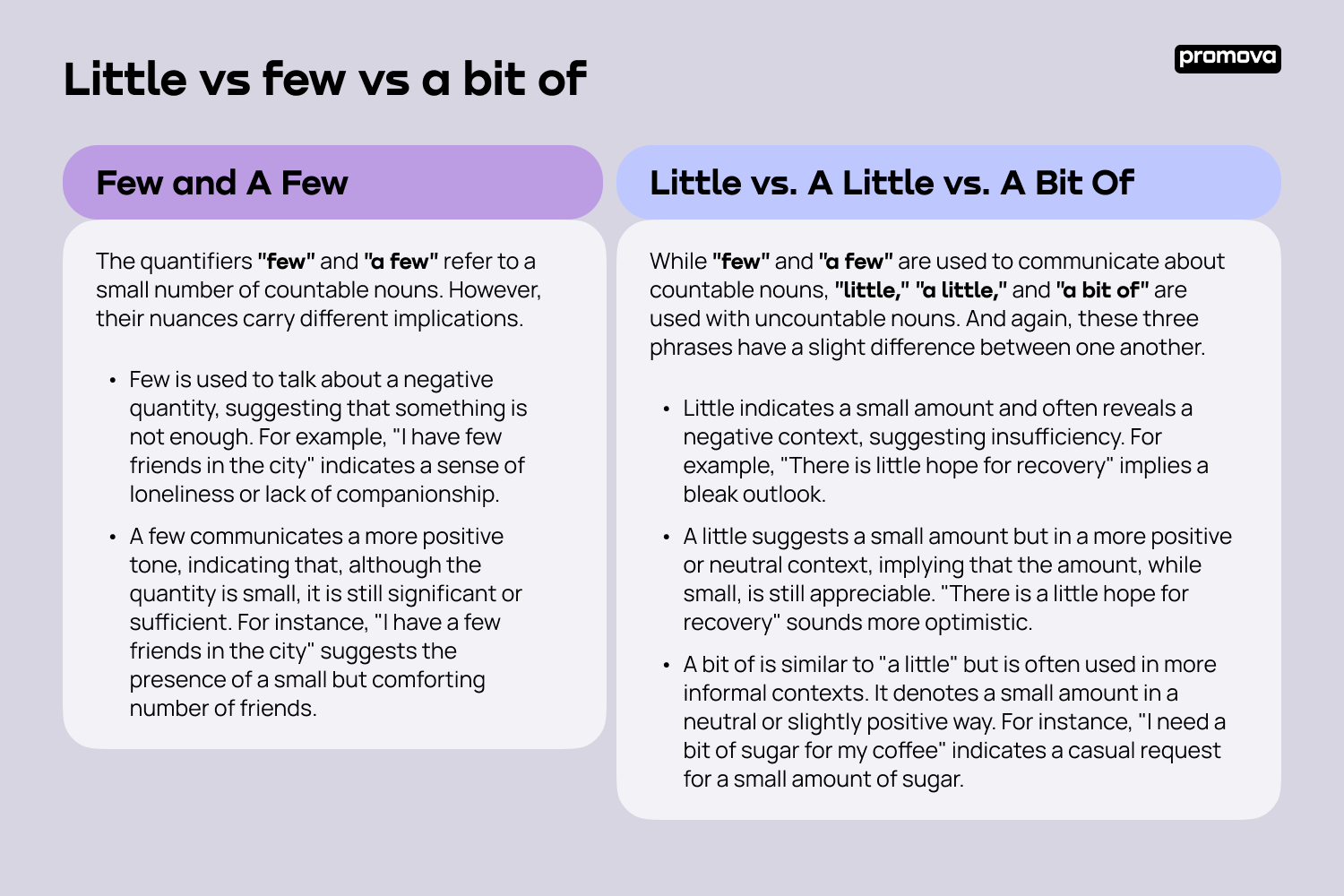Little vs few vs a bit of
Contents
Quantifiers are important in the English language for describing the quantity of something when you can’t or don’t need specify exact number. Such words as “few,” ‘a few,” “little,” “a little,” and “a bit of” are commonly used for this purpose. Since they serve different purposes, language learners often confuse their usage. In this article you will learn the difference between little vs few vs a bit of, and discover the rules of their usage.
Few and A Few
The quantifiers "few" and "a few" refer to a small number of countable nouns. However, their nuances carry different implications.
- Few is used to talk about a negative quantity, suggesting that something is not enough. For example, "I have few friends in the city" indicates a sense of loneliness or lack of companionship.
- A few communicates a more positive tone, indicating that, although the quantity is small, it is still significant or sufficient. For instance, "I have a few friends in the city" suggests the presence of a small but comforting number of friends.
The biggest challenge for all of language learners is to remember the difference between such two phrases. When you add an article, you change the mood of the sentence, so the whole message will be understood differently. To remember the difference, associate the article “a” in this quantifier with a positive mood.
2
Little vs. A Little vs. A Bit Of
While "few" and "a few" are used to communicate about countable nouns, "little," "a little," and "a bit of" are used with uncountable nouns. And again, these three phrases have a slight difference between one another.
- Little indicates a small amount and often reveals a negative context, suggesting insufficiency. For example, "There is little hope for recovery" implies a bleak outlook.
- A little suggests a small amount but in a more positive or neutral context, implying that the amount, while small, is still appreciable. "There is a little hope for recovery" sounds more optimistic.
- A bit of is similar to "a little" but is often used in more informal contexts. It denotes a small amount in a neutral or slightly positive way. For instance, "I need a bit of sugar for my coffee" indicates a casual request for a small amount of sugar.

As well as with “few vs a few.” here the main difference is connected with using the article “a.” Remember to always add “a” when you want to indicate that even a small amount of something is good.
One more thing is to remember to use “a bit of” for formal situations. It’s not a mistake to use this phrase in informal conversations. However, you might look unprofessional using “little or a little” in a professional conversation.
Conclusion
By understanding the subtle differences between "few," "a few," "little," "a little," and "a bit of," you can enhance the precision and expressiveness of your English. Remember, language is not just about following rules; it's about conveying your message in the clearest and most effective way possible.
Comments